A relatively novel Go programming language (aka Golang) created quite a bit of buzz when it was released in 2012. The programming community is still deciding on its attitude towards Go, with many veterans feeling reluctant to jump on another trend until it’s proven popular enough by the market.
Let’s review the reasons why you should use Golang for your next project, as well as scrutinize the minuses of this must-have skill in the toolkit of any reputable software development company.

Meanwhile, at the end of 2020 one thing is for sure: Go is here to stay. Every ranking proves the point:
Stackoverflow cites Go in the top 5 of the most loved languages and top 3 of most wanted languages. Salary-wise, Go is also reported to be one of the highest-paying skills topped only by Scala in the USA ($140K and $150K per year respectively).

According to the HackerRank survey 2020, which is based on data from a massive 116 thousand respondents from 162 countries, while Go is still not one of the 10 best-known languages, it's #1 on the list of programming languages that developers plan to learn next.
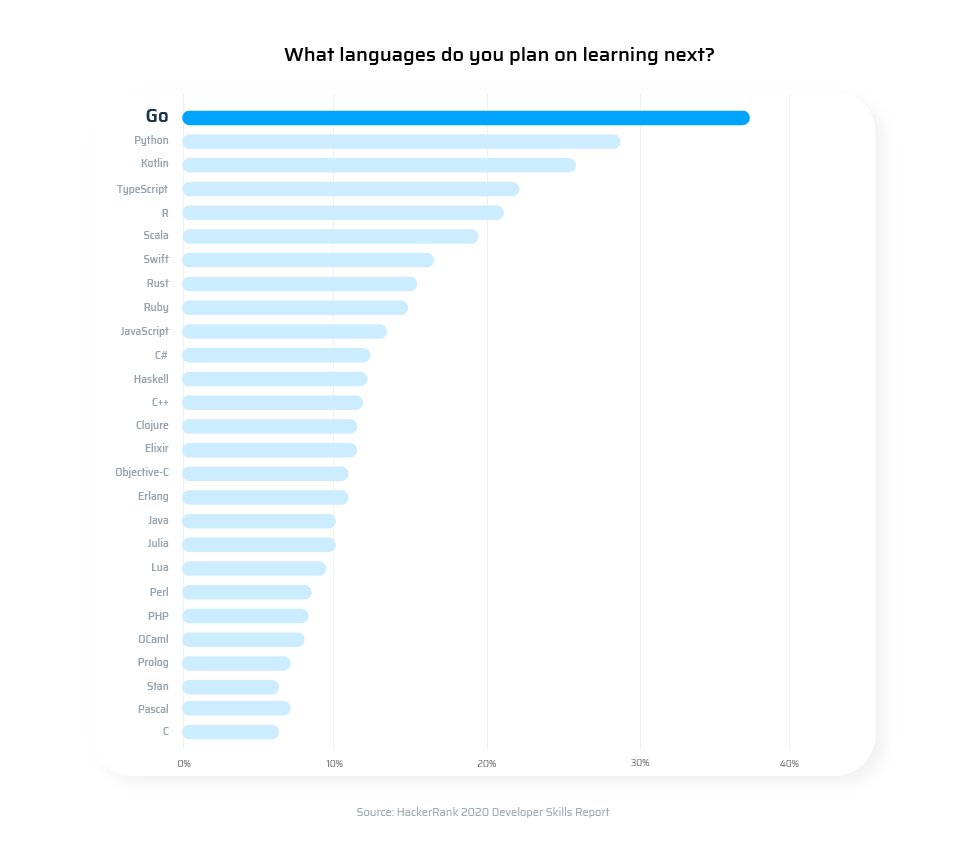
History of Google Go
Go is a Google product. That is why it got so much credibility from the community from the very start. It's also a reason why it's so dead simple.
It was conceived as a straightforward language that would address the unnecessary complexity and exceedingly multi-layered structure of the then-dominant programming languages, like C++, Java, and Python.
It was designed in 2007, first announced in 2009, and V 1.0 was released in March 2012. The Go Authors are Robert Griesemer, Rob Pike, and Ken Thompson. Now it's an open-source project available to download on golang.org.
Golang Statistics: Seeing the Perspective
Below are the findings of the official Golang.org developer 2019 survey that surveyed 10,975 respondents who use Go:
1. Other language expertise of Go developers:
Go programmers claim knowledge of the following other languages: Python, JS, Java, C/ C++.
Those who have been using Go for years are more likely to state proficiency in C/C++, while younger adopters would boast command of JS and Python more frequently at the top of skill set.

2.Which industries Use Golang most?
Out of 8,105 respondents who answered a question about the industry they are working in, the statistics looked as follows:
- Technology – 43%
- Finance 12%
- Media & gaming – 9%
- Retail – 7%
- Telecom – 5%
Healthcare, transportation, education, nonprofit, manufacturing, energy have accounted for 2-5% of the split each.
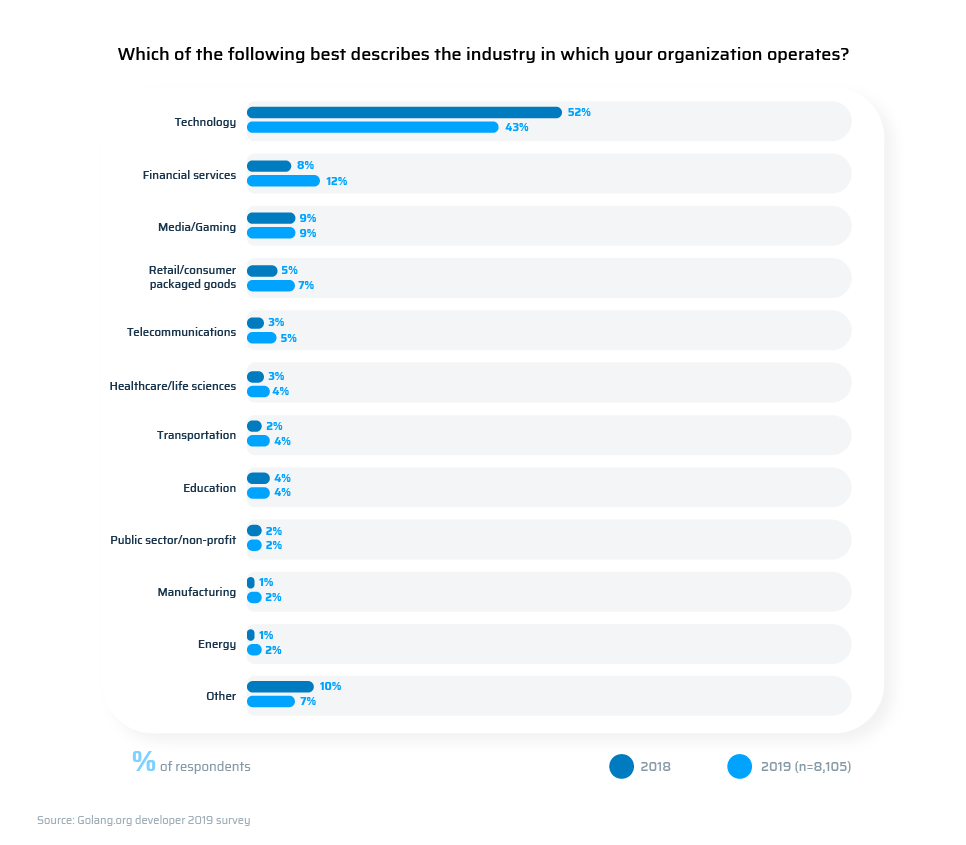
3. Go Developer tools stats
Out of 7732 Go professionals, the majority uses Linux and macOS (66% and 53% respectively), while Windows is only used by 20% of the respondents.
When asked about development programs they use primarily, Go developers mentioned exclusive use as follows: only Linux – 31%, only macOS – 26%, only Windows – 6%.
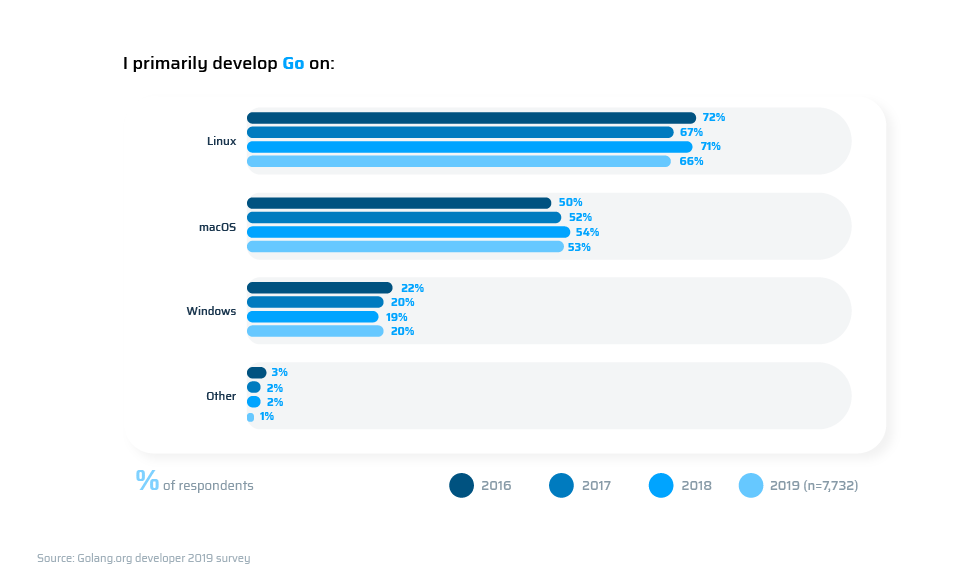
4. Preferred editor statistics for Golang 2019
2019 has demonstrated further crystallization of two major editors, which are strongly preferred by the Golang coders: VS Code and GoLand.
While VS Code is still a leader with 41%, its popularity only grew by two percentile points. GoLand meanwhile, went from 24% to 34% by 10 points and 41,6%, which signals a strong trend for consolidation of the preferred editor to two leaders.
Vim, Emacs, Sublime Text, Atom have all witnessed decline on the other hand.

What is GO most commonly used for?
When asked what it is they write in Go, users cited these 7 most frequent purposes:
- API / RPC services – 71%
- A runnable program / CLI – 62%
- Libraries or frameworks – 48%
- Web services – 47%
- Automation / scripts – 42%
- Agents & daemons – 40%
- Data processing – 37%
A more broadly formulated question yielded the following results:
- Web dev – 66%
- Databases – 45%
- Network programming – 42%
- System programming – 38%
- DevOps tasks – 37%
Disadvantages & Pains of the Go Programming Language
In a 2019 official Golang survey developers reveal a striking insight about why they don't use the language more: working on a project in another language (56%) and working on a team that prefers another language (37%). Neither of these reasons can be directly influenced by Go developers, but are rooted in the fact that many existing platforms and businesses use older languages with the respective army of developers behind them.
The third most popular reason, lack of a critical feature (25%), got appropriate attention from developers as guidance for further improvement.
They reveal some of the main missing capabilities of Go that programmers face, concerning:
- Generics
- Error handling
- Functional programming
- Expressivity
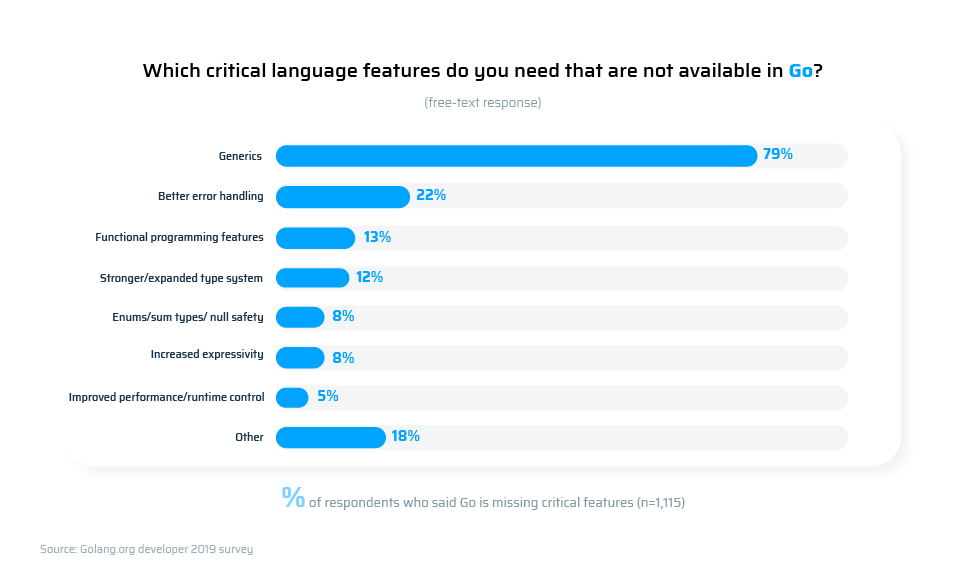
3,940 developers also specified exactly what their challenge is when coding in Go, the following being the most frequent answers given by 7-15% of respondents:
- Lack of generics
- Working with modules & vendoring
- Issues with tooling
- Learning curve
- Support
- Convincing coworkers to use Go
- Error handling
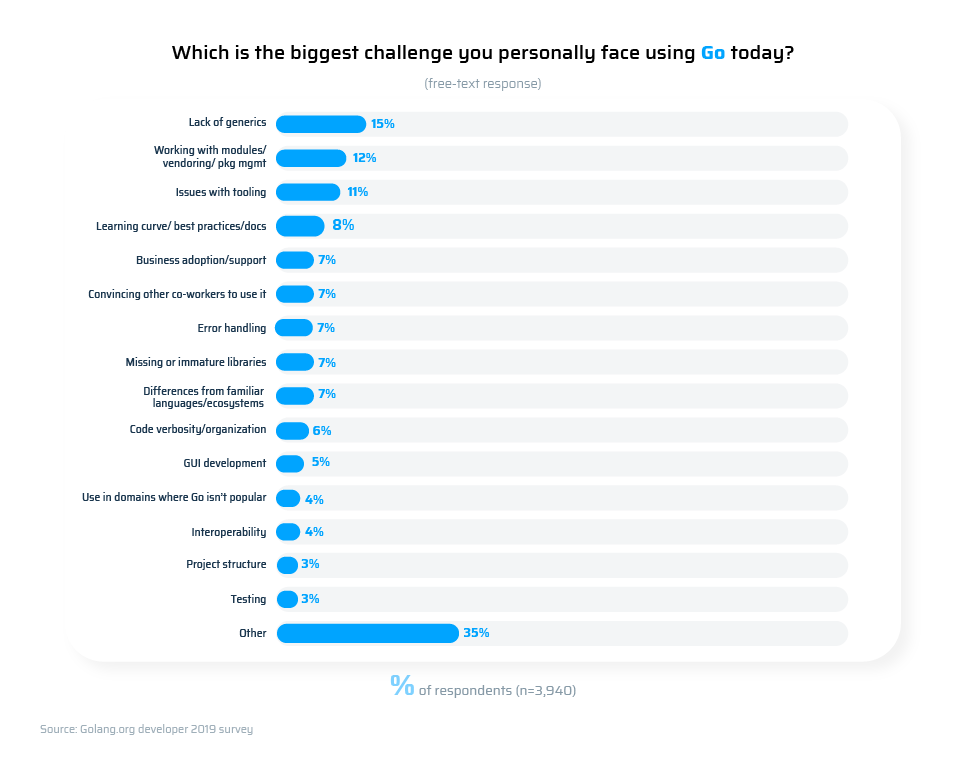
Golang Advantages & Why You Should Use It for Your Project
Simplicity is difficult to design, as Rob Pike mentioned at Dot Go Conference. (He’s one of the 3 developers, who devised this language).
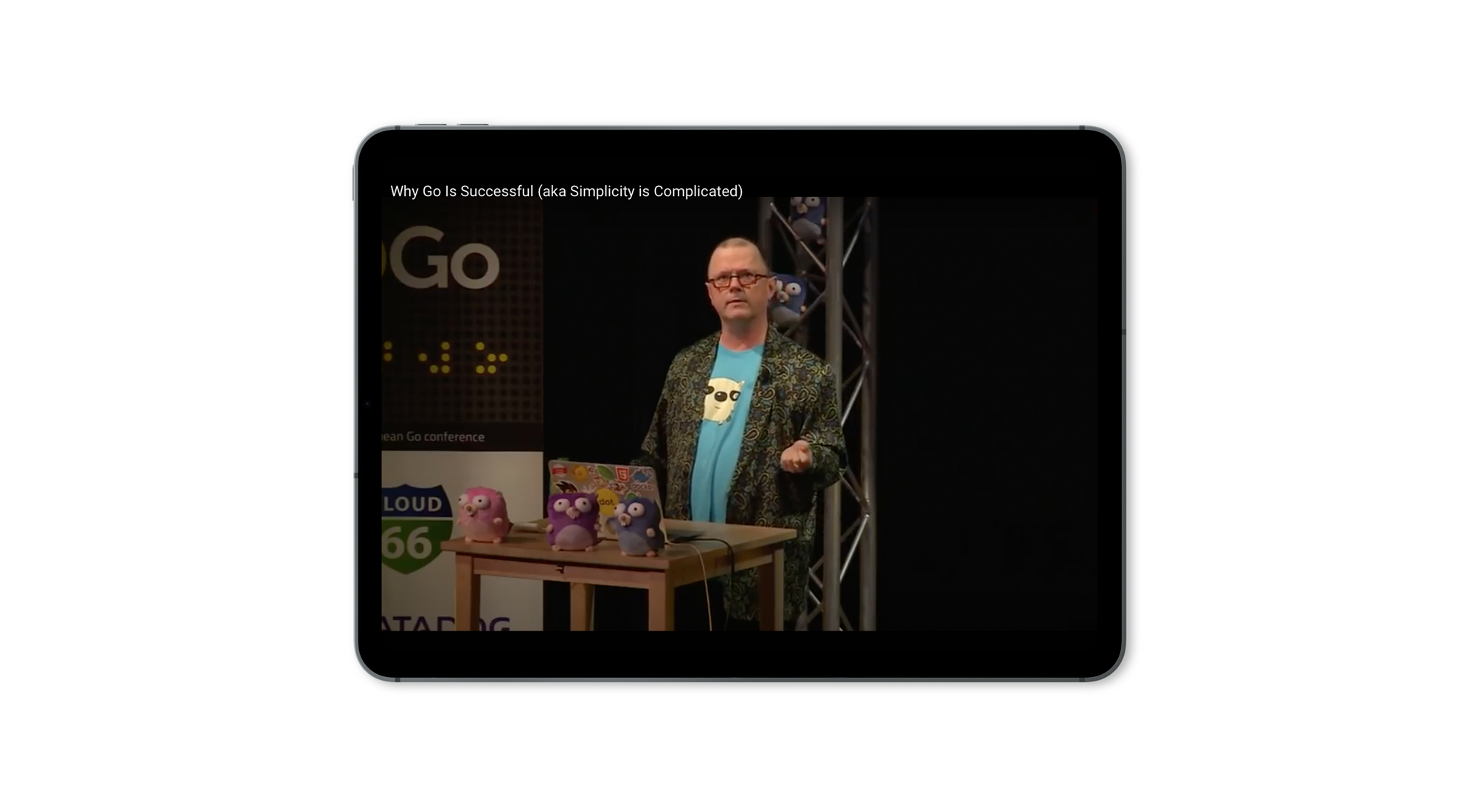
And simplicity was what the team was set to achieve initially, stripping C of all the clutter, noise, and unnecessary features.
Below are the features of Go, that made it one of the most coveted skills in the developer’s community the world over.
Simplicity & Readability: Firm Foundation to Scalability
Go is easy to read, understand, work on, and fix. It is intentionally devised with as few keywords as possible, and with as few features as possible. This is why it may be not as fun to write, but the Go code is definitely easy to maintain. This benefit in turn, is amazing for large-scale programming purposes.
Golang has a limited data structure compared to other languages. There are no classes, just functions, and types. It may feel somewhat disturbing at first for a software developer who is used to C, Java, or Python. But then things feel like they should have been this way a long time ago across every language.
Productivity: Starring Production-ready Library
This programming language only has 25 keywords. Talk about noise reduction and streamlining of the processes!
To further make coding in Go even more productive, it features a powerful standard library that is production-ready. The creators of the lingo put so much effort into the standard library that you can use it in real life. No need to search or download more libraries.
Reliable & Robust Go: No-Fair-Weather Tool
You can rely on programs written in Go to be fast and withstand peaks in traffic due to its robust framework.
Its unique concurrency enables developers to create programs with independently functioning pieces with ease.
Unlike C, which is pretty similar to it in general, Go is a garbage-collected language.
Best of all, it’s a cross-platform programming language, so Go software developers can choose Windows, Linux, macOS, or other platforms without giving it a second thought.
Maturity & Fixed Nature
Go has been around for less time than other popular programming languages, but it's mature enough for mass adoption.
It was initially designed with the knowledge of all other major languages and took the best from each of them, but got rid of the worst features.
Golang has been pretty steady, and updates are both rare and still compatible with previous versions.
The language features a built-in package manager, which is a substantial relief for Go programmers.
It's also worth mentioning that the testing framework and a concurrency model are both built-in and free. So users don’t have to look for them outside, download them or pay – they are all ready to be utilized.
Do Big Companies Use Go?
Indeed, they do.
If you are looking for an extensive list of companies using Golang, check out this Github page.
Below is a quick list of big names that give a further dimension to Golang's fast-expanding popularity:
- Uber
- Fabric
- SendGrid
- Medium
- DailyMotion
- SoundCloud
- Dropbox
- 1Password
- Hootsuit
- Alibaba
- Sixt
- Gett
- Fiverr
- UK.gov
Zoolatech: Software company in Eastern Europe with Silicon Valley roots
If you are just considering a new project in web dev, mobile application development, or software engineering, Zoolatech can help.
Not sure what programming language to choose for your next project? Adamant to hire a team of Go developers to kickstart a project that’s going to serve for decades to come, yet be scalable and easy to maintain? Ask us how we can help.
Looking for an ODC (Offshore Development Center) type of cooperation, whereby we take care of all the boring stuff, like hiring and management, but you get to call the shots? Or do you have a mission to accomplish and want it to be presented a result on a silver platter? Zoolatech team does managed delivery projects too.
Our team has the diverse technical talent to help you build the software you need: Golang, C, Java, Python, you name it.
Drop us an email or fill out a short contact form with your technical task, and we will come back shortly to discuss and make our best offer: timewise, technology-wise, and rate-wise.